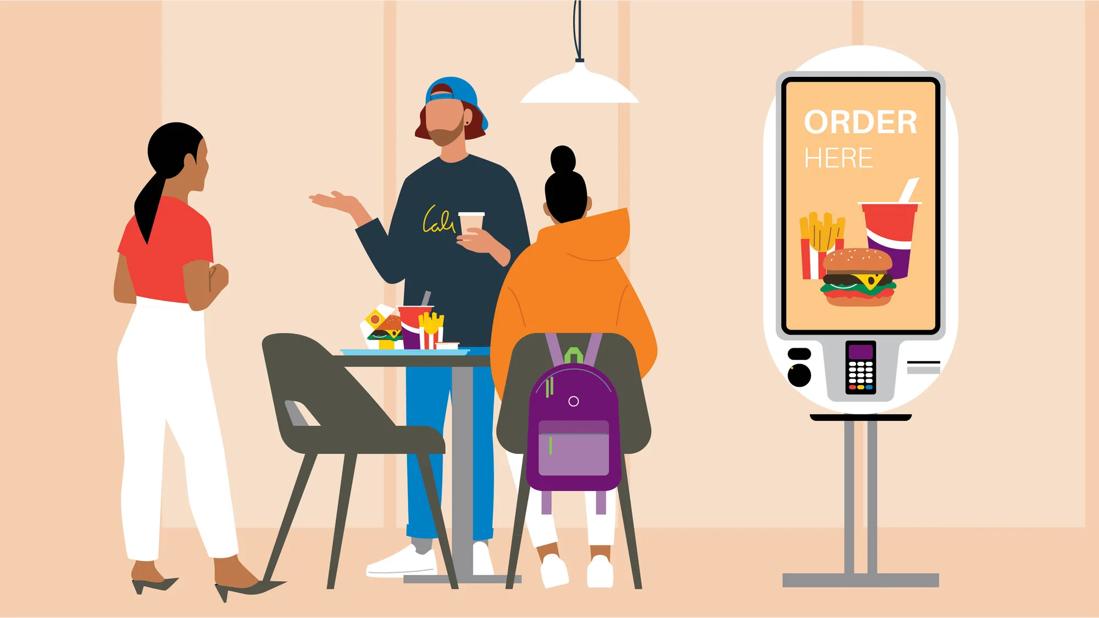Lead with empathy, involve other caregivers, and teach them how insulin helps them live a long and healthy life

Caring for your child who’s living with Type 1 diabetes involves a lot of planning and intentional decision-making when it comes to treatment. But it takes more than just knowing when and how to give your child insulin.
Advertisement
Cleveland Clinic is a non-profit academic medical center. Advertising on our site helps support our mission. We do not endorse non-Cleveland Clinic products or services. Policy
With Type 1 diabetes, your child will need to learn about the condition itself. And they’ll need to learn how it affects their body and the way they might feel at any given moment. And with that can come the need for self-assurance and self-awareness. So, you’ll want to keep other lifestyle considerations in mind that can benefit their physical, emotional and mental health, while keeping their life as relatively normal as possible.
Pediatric diabetes educator Ann Smith, RN, CPN, CDCES, explains why certain lifestyle changes can be beneficial and how to help ease your child into this new reality.
For the most part, parents and caregivers of children living with Type 1 diabetes are encouraged to stick to normal routines, but with some minor but important tweaks.
“It’s a lot of checking blood sugars, counting carbohydrates, calculating insulin doses,” says Smith. “But it’s also thinking about how your child’s blood sugars change when they’re physically active and packing snacks for when they need them.”
When it comes to making lifestyle adjustments, Smith suggests focusing on how you talk about the condition and rethinking how your child tackles day-to-day experiences.
You don’t want to make them feel excluded from being able to do activities, hobbies or even enjoy foods they love simply because they have Type 1 diabetes. Whenever possible, try to inspire them to participate in normal activities and frame using insulin as just a simple (but important) added step in their day-to-day lives.
Advertisement
“Let them know they’re not different from anybody else and that these treatments are just something we have to do to make sure they feel good,” recommends Smith. “They can still go get fast food with their friends or have a piece of cake and ice cream at a birthday party if they count their carbs and take the right amount of insulin.”
“Kids have a better time coping and accepting their diagnosis if everyone they’re surrounded by is aware and just as accepting,” notes Smith.
It’s important to share your child’s diagnosis with their school nurses, teachers, coaches and any other caregivers who’ll be around them throughout the day. Sharing this knowledge helps keep them safe in case of emergencies. But it also helps normalize the condition, too.
Depending on your child’s age, there are different classes you or your child can take to learn about how insulin works, how to administer it and when they should take insulin. For example, some insulin is given through daily injections before every meal and before bedtime. Others use discrete insulin pumps for continuous insulin flow 24/7.
Just knowing what’s available to them can help put things into perspective. But you also want to teach them how to monitor their blood sugar levels.
“We always encourage parents to have a healthy, hands-on approach to managing their child’s diabetes,” says Smith. “When kids are younger, parents are doing everything for them all the time. But then, as kids get older, let them take more responsibility.”
Part of that process is helping them determine when their blood sugar levels are too high or too low, and how it physically feels when these things happen.
“Symptoms of low blood sugar are the most concerning, and we tell them those are the symptoms you have to act on,” she adds.
“Families shouldn’t have to adjust their diet that much and they should still be able to eat and drink the same things that they currently do,” reassures Smith. “The main thing is that we try to limit sugary drinks. If they’re thirsty in between meals, stick to sugar-free fluids or water so it’s not affecting their blood sugar that much.”
Otherwise, sugary drinks that contain carbs, like sweet teas or juices, should be reserved for mealtimes. That way, you can give them insulin with the rest of the meal to cover all the carbs they’re consuming.
Kids are constantly on the go — at school, at their friends’ houses, with other family members and on vacation. In moments when they’re not at home, they should have access to sugary snacks like fruit snacks, 4-ounce juices, applesauce pouches or fun-size candy packs for when they need to quickly elevate their blood sugar levels. Glucose tablets are also helpful to have.
Advertisement
“The only thing that helps treat low blood sugar is food,” stresses Smith. “If their blood sugar is low and they have food to bring it back up, they don’t take insulin to cover that food. So, it’s about finding the right balance.”
The target blood sugar range for kids varies based on their age and activity level. So, you’ll want to double-check with your healthcare provider or pediatrician to make sure your child’s blood sugar levels fall within a range that makes sense for them.
If your kid is a picky eater — say, they have two bites of a cheeseburger and feel full — then you’ll want to dose the amount of insulin that accounts for what they’ve eaten at the end of the meal, rather than dosing before the meal.
“Limit mealtime to about 30 minutes and then count how many carbs your child ate so you can give the appropriate amount of insulin,” explains Smith. “If your child receives their full insulin dose at the start of the meal but they don’t eat all of their food, they will end up with a low blood sugar within a couple hours.”
Consistency is key when it comes to insulin. So, you’ll likely want to provide long-acting insulin before bedtime once a day to give your child what they need to get through the night.
Advertisement
“Even for older kids who aren’t going to bed at 9 p.m. anymore, it’s still important they get their insulin at the same time every day, regardless of what time they’re going to bed,” advises Smith. “It helps with overall blood sugar control to make sure their glucose levels are appropriate before they go to sleep. If they’re low, they need to have a snack before going to sleep. If their glucose is high, then sometimes, we have them give extra insulin to help bring the blood sugar down during the night.”
When your child comes down with an illness, like the flu, you’ll need to be more attentive.
“You’ll want to check their blood sugar levels more frequently, about every three hours, as opposed to just before meals,” says Smith. “You should also check their ketones in their urine using ketone testing strips to make sure those are negative.”
Ketones are acids that are made as a result of your body using fat instead of glucose for energy. In high amounts, they can be toxic and lead to life-threatening complications like diabetes-related ketoacidosis (DKA). But the right amount of insulin can reduce the amount of ketones you have.
Increased physical activity tends to result in low blood sugar. So, you’ll want to plan accordingly before your child participates in moderate physical activities like sports or before they spend time outdoors. If your child uses an insulin pump, you can put them in activity mode to raise their blood sugar targets prior to physical activity. Otherwise, you’ll need to turn to food for preventive measures.
Advertisement
“The general rule of thumb is if their blood sugar is less than 150 mg/dL before a practice or game, have them eat a 15-gram carb snack without insulin coverage so it boosts their blood sugar up and prevents them from having low blood sugar during the activity,” shares Smith.
Diabetes technology has come a long way. Insulin is now faster acting, and we have continuous glucose monitoring tools, smarter insulin pumps and smartphone apps that can help keep an eye on your child’s blood sugar levels at any point in the day.
“Sometimes, kids feel isolated, thinking they’re the only ones who have to check their blood sugar levels and take insulin,” recognizes Smith. “So, you want to make it a part of their normal routine and not make it such a huge deal when it comes to special occasions like holidays or birthdays, where they’ll need to keep a closer eye on their condition.
Kids with Type 1 diabetes can still do all the same fun things as their peers without diabetes.”
Learn more about our editorial process.
Advertisement

The emergency room is for serious medical issues; urgent care can help when you can’t get a quick appointment with your child’s doctor

An allergist can help you make a plan that includes information about what to do in case of an allergic emergency

Early weight gain can lead to health issues like heart disease, diabetes and cancer

Severe and debilitating headaches can affect the quality of your child’s life

Asthma-proof your home, keep notes and (try to) be patient with long-term treatments

Talk to your pediatrician; early treatment is key

Why kidney stones in kids are on the rise (and what to watch for)

How to know when a stomachache is something more serious

The best parenting style balances enforcing rules and showing plenty of love

Tips include cutting back on sugar, focusing on exercise and managing stress

It can be harder to let go when you’ve invested time, energy and emotions — but it might be the healthier choice long term